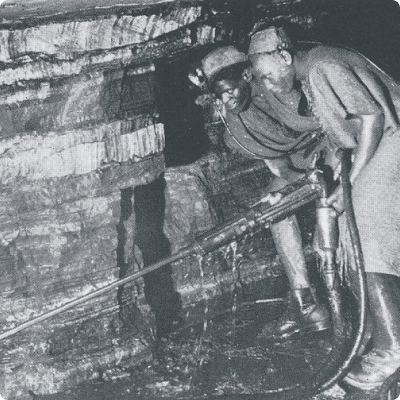Based on Your Reading:
Get Your Free Mesothelioma Guide

Find a Top Mesothelioma Doctor

Access Help Paying for Treatment

The incidence of mesothelioma in South Africa ranks among the highest in the world. The hefty mesothelioma count stems from the country's extensive history of asbestos mining and production over more than a century.

Written by Karen Selby, RN • Edited By Walter Pacheco • Scientifically Reviewed By Arti Shukla, Ph.D.
The Mesothelioma Center at Asbestos.com has provided patients and their loved ones the most updated and reliable information on mesothelioma and asbestos exposure since 2006.
Our team of Patient Advocates includes a medical doctor, a registered nurse, health services administrators, veterans, VA-accredited Claims Agents, an oncology patient navigator and hospice care expert. Their combined expertise means we help any mesothelioma patient or loved one through every step of their cancer journey.
More than 30 contributors, including mesothelioma doctors, survivors, health care professionals and other experts, have peer-reviewed our website and written unique research-driven articles to ensure you get the highest-quality medical and health information.
My family has only the highest compliment for the assistance and support that we received from The Mesothelioma Center. This is a staff of compassionate and knowledgeable individuals who respect what your family is experiencing and who go the extra mile to make an unfortunate diagnosis less stressful. Information and assistance were provided by The Mesothelioma Center at no cost to our family.LashawnMesothelioma patient’s daughter


Selby, K. (2024, February 2). Mesothelioma in South Africa. Asbestos.com. Retrieved April 18, 2024, from https://www.asbestos.com/mesothelioma/south-africa/
Selby, Karen. "Mesothelioma in South Africa." Asbestos.com, 2 Feb 2024, https://www.asbestos.com/mesothelioma/south-africa/.
Selby, Karen. "Mesothelioma in South Africa." Asbestos.com. Last modified February 2, 2024. https://www.asbestos.com/mesothelioma/south-africa/.
The incidence of mesothelioma in South Africa ranks among the highest in the world.
South Africa reports approximately 200 cases of mesothelioma per year. A 2002 study cites that more than 2,700 South Africans have died of mesothelioma. Researchers say the cancer is underreported.
Environmental exposure accounts for 30% of mesothelioma cases in South Africa. Many are from the Northern Cape area. More than 70% of reported environmental cases affect women and children. Exposure happened when asbestos miners brought home fibers on their hair and clothes.
Diseases such as HIV and tuberculosis are serious health issues for the country. Exposed workers who die of these conditions before developing mesothelioma can skew statistics on the cancer’s true incidence.
South Africa was a global leader in asbestos production. The nation operated a thriving industry for more than a century. But South Africa banned asbestos in 2008.
The ban prohibits the importation and exportation of asbestos. It also bans the use and manufacturing of the mineral.
Africa ‘s asbestos mining and production for more than 100 years are the causes of mesothelioma.
Doctors around the world saw high rates of lung disease in workers exposed to asbestos in the early 1900s. Christopher Wagner, a South African pathologist, discovered a definitive link between the exposure and cancer in 1960.

Wagner’s findings stemmed from a 1956 autopsy he performed on a South African man who worked at a gold mine. The autopsy revealed no signs of tuberculosis. Instead, he found a tumor in the patient’s right chest and a collapsed lung.
He gained further evidence for his study from Dr. C.A. Sleggs, the chief medical officer of Kimberley Tuberculosis Hospital.
Sleggs performed biopsies after collecting imaging scans from patients who lived near the mine. He found mesothelioma of the pleura in those biopsies. Shortly afterward, Wagner reported the link between the exposure and mesothelioma.
Manufacturers ignored the findings. The industry ramped up the output of crocidolite asbestos from 60,389 tons in 1960 to 155,477 tons in 1974.
Mesothelioma patients in South Africa can seek treatment at these cancer centers:
Leading centers in South Africa can provide cutting-edge therapies to cancer patients. But not all facilities have doctors who specialize in mesothelioma. This runs the risk of misdiagnosing patients.
Get Your Free Mesothelioma Guide

Find a Top Mesothelioma Doctor

Access Help Paying for Treatment

South Africans most at risk for developing mesothelioma are former asbestos miners. These workers excavated massive deposits of the mineral from the earth. And they released clouds of toxic dust into the air.
Workers and others who inhaled the dust increased their risk of developing mesothelioma. The disease’s lengthy latency period is 20-50 years after exposure.
Miners of gold, diamonds and other minerals were also at risk. Asbestos can form alongside these minerals. Miners sometimes disturbed these deposits and suffered dangerous exposures.
Even outside of the mines, it was hard for people to escape danger. While the risks to miners were significant, the majority of mesothelioma cases in South Africa have stemmed from asbestos use in secondary industry.
Three such industries known for high risks of exposure include:
Workers in other professions in South Africa lost their lives after harmful exposures. Those occupations include::
During the mining process, asbestos would become airborne and spread to nearby towns. When people inhaled the dust, they experienced environmental exposure.
Research published in 2021 studied the use of semi-quantitative X-ray powder diffraction (XRD). The technique would determine asbestos contamination levels in soils. The scientists also used this method to assess distribution patterns of asbestos mineral species in the surrounding soils.
The results from the 2021 study indicate that XRD is a useful tool for identifying target areas after rehabilitation efforts that may require more detailed, time-consuming, and costly analysis.
Asbestos has contaminated many parts of South Africa, most notably the Northern Cape Province. A report on Penge concluded that ongoing risks of environmental exposure make the town unfit for habitation. Northern Cape still struggles with exposure risks from the region’s 82 remaining asbestos mine dumps.
South Africa is a country rich with minerals, known worldwide for its ample deposits of gold and diamonds. The nation also has a long history of mining and exporting asbestos, a toxic mineral fiber linked to the rare and aggressive cancer mesothelioma and various other diseases.
Although South Africa officially banned the use, processing and manufacturing of asbestos-containing products in 2008, past exposures from decades ago eventually raised the country’s incidence of mesothelioma to one of the highest rates in the world.
Out of the six types of asbestos minerals used commercially, South Africa has mined three on a large scale: amosite, chrysotile and crocidolite. While South Africa has used asbestos domestically for a variety of different purposes, the vast majority of its mined reserves were exported to other countries.
South Africa was the third largest asbestos producer in the 1970s, behind Canada and the USSR. The nation was once a global leader in the production of crocidolite and amosite, supplying approximately 97 percent of the world’s crocidolite and practically all of the world’s amosite.
The asbestos mining industry in South Africa reached its peak in 1977 when it employed 20,000 miners and achieved an output of 380,000 tons. Exports began to decline soon after, as evidence of serious health complications prompted countries around the world to enact restrictive legislation on asbestos use.
Between 1910 and 2002, South Africa mined more than 10 million tons of asbestos. The last of the nation’s asbestos mines ceased production in 2001 and closed down the following year. South Africa outlawed all types of asbestos by 2008, but the once-lucrative industry has left the environment polluted. Asbestos exposure risks continue to threaten the well-being of South Africans to this day.
South Africa once operated numerous mines that provided the bulk of the world’s supply of the mineral. Over the years, mining at these sites caused large-scale occupational and environmental exposures to toxic dust.
The South African asbestos mines were owned by subsidiaries of major European corporations, including Griqualand Exploration and Finance Company Ltd., Turner & Newall Ltd. and the Cape Asbestos Company. These corporations cared little about the welfare of their South African workers or the people who lived near the mines. Health and safety standards at the South African mines were incredibly poor, especially compared with the mines the companies operated in Europe.
Because many of the South African mine workers — including women and children — were largely undocumented, it is difficult to assess the true scope of harm the mines caused. The country reports about 200 cases of mesothelioma per year, but most likely this is an underestimate.
Asbestos’s natural resistance to heat, chemicals, acid and electricity made it a highly desirable material that served a wide range of uses. Manufacturers primarily used the mineral for insulation and fireproofing applications, but it has more than 3,000 documented uses.
In South Africa and worldwide, asbestos was once a popular material in:
However, the main pathway of asbestos exposure for South Africans has historically been work-related, primarily in professions like mining, milling, construction, insulation work and asbestos cement manufacturing.
For example, in February 2019, the Ndlambe Municipality had to halt demolition and renovation work on a residential home because asbestos was found. A neighbor reported that the roof contained asbestos and that workers were not taking safety precautions to avoid exposure.
Many decades of asbestos mining and use in South Africa have taken a serious toll on the region and its people. And the spread of asbestos-related disease has extended far beyond the asbestos mines and mills. The mineral fiber contaminated many other areas as workers transported it by donkey, wagon, truck, train and ship.
Although South Africa has banned all mining, manufacture, import and export of asbestos and products that contain it, the toxic mineral persists in the environment. There are still massive asbestos deposits underground, and legal mining operations continue to unintentionally disturb them and stir up toxic dust.
Many older buildings and structures likely contain asbestos materials, which pose serious health risks to construction workers involved in demolition and repairs. Even though South Africa has outlawed the recycling of asbestos-containing materials, it still occurs because of a shortage of housing and building materials in the country. Additionally, the disposal of asbestos materials and the maintenance of asbestos dump sites continue to threaten the health of South Africans.
Litigation, class actions and out-of-court settlements have prompted some companies that once mined asbestos in South Africa to establish asbestos trust funds, including the Asbestos Relief Trust (ART) and the Kgalagadi Relief Trust (KRT). These trusts provide monetary compensation to qualified individuals who developed an asbestos-related condition after occupational exposures.
Access to the trust money is restricted to past employees of participating mines and people who lived near the mines who suffered environmental asbestos exposure. The trusts have also allocated some money to manage environmental contamination, but much more is needed to clean up the contaminated land, railways, mines and asbestos waste dumps that remain.
Your web browser is no longer supported by Microsoft. Update your browser for more security, speed and compatibility.
If you are looking for mesothelioma support, please contact our Patient Advocates at (855) 404-4592
